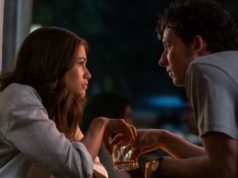Still, he’s missed, all too fondly. In remembrance, here’s the eulogy I delivered at the Pampanga Press Club necrological rites for Sonny on 3 June 2015, Holy Mary Memorial Park Chapel B.
IN ATTENDANCE here tonight is a small universe in grief, with our dearly departed Sonny at its vortex. All of us inter-connected with the common bond of love, of affection, we have for him, and he had for us.
Each of us having taken a part, at some time or the other, in Sonny’s journey through life. Allow me to share mine.
Sonny was serving as city economist in the early ‘80s when he was introduced to me by Ram Mercado, his journalism mentor and publisher of Pampanga Eagle where Sonny was starting his writing career as a columnist. I was at that time moonlighting as editor of Max Sangil’s Live News which shared the same printer with the Eagle, the Bankers’ Press.
Weeks after this first meeting, Ram scrounged a fact-finding mission for Sonny and me to then strife-torn Zamboanga City, where upon knowing we were Kapampangans, the widow of the martyred mayor Cesar Climaco told us to our faces that it was our cabalen Col. Rolly de Guzman that killed her husband. Little did we know then that this same Colonel De Guzman would himself figure in our own almost extrajudicial extinction.
It was in the immediate post-EDSA period that Sonny and I – along with the departed Ody Fabian, Bert Basa and budding journalists Elmer Cato, Jay Sangil and Arnel San Pedro whom we fondly called the “Kamias Trio” – lived unseparated lives chasing after stories, primarily on the insurgency, that took us to mountain lairs of the regular units and urban dens of partisans, even right to the battlegrounds and encounters; and established the Shanghai Cartel, so-called because we shared and wrote our stories at the city’s famous restaurant and phoned these to our respective newspapers and wire agencies in Manila.
Abad Santos
In 1988, we helped Elmer put up the Angeles Sun which within its very first month was taken to court for libel by Mayor Antonio Abad Santos, owing to the column “Political estafa” by Sonny Lopez. The case though was dismissed right at the fiscal’s office.
But Abad Santos would not rest easy. On September 6, 1988, six bodyguards of the mayor, brandishing M-16 assault rifles and machine pistols swooped down on Radio dzYA, ordered the radio staff to leave, and posted themselves at the studio, their guns pointed to the hosts of the Tagamasid program Sonny Lopez and Bong Lacson, even as we continued on the air with the exposes of corruption in the city government and the events at the station which caused a mini-people power downstairs the dzYA building.
All the while through our broadcast, Sonny had his right hand inside his shoulder bag, clutching at the ready, his trusty and rusty .38 pistol with only three bullets in its chamber.
Vigilantes
It was the coverage of the insurgency in the region, notably the exploits of the urban partisan unit of the NPA, the Mariano Garcia Brigade, that earned us the ire of the military, and merited our inclusion in the order of battle of the right-wing vigilante groups.
At the tail-end of the so-called “festival of killings” in Angeles City in May-June 1988 where over 40 were killed including policemen and para-military forces on one side and a doctor, lawyer and leftist sympathizers on the other, the order came for three newsmen to be added to list of fatalities.
The names were Sonny Lopez of Malaya and United Press International, Elmer Cato of Manila Chronicle and Kyodo; and Bong Lacson of People’s Tonight and the Associated Press.
It was only through the intervention of a friend in the military who separately hid us the day we were supposed to be killed, and a businessman patron who pleaded our case with the head of the vigilante group that we were spared from sure execution, with the most extreme prejudice.
A week later, in a party at the home of the friend that hid us, Sonny, Elmer and I were the only “civilian” guests, all the others were in the police and military services as well as paramilitary groups. A businessman-looking whitehaired gentleman approached our table and introduced himself as Col. Rolly de Guzman and in a soft but fi rm voice accused us of being propagandists, if not actual members, of the CPP-NPA that warranted our inclusion in the vigilantes’ death list.
We had trouble looking for our balls that night. We went home assured though that we’d been delisted and would live beyond the insurgency wars.
Politics
Sonny’s joining politics did not diminish any his relationship with his media peers. On the contrary, it further strengthened our bonds. As we went all out for him, to the point of lambasting some other political pretenders. Here’s a take from a column in the March 22-28, 1992 issue of The Voice, titled “First was Sonny Lopez.”
WITH THE successful conversion of Clark Air Base from a military installation into a special economic zone emerging as the most viable issue to prop even the most asinine political platform, every Angeles City candidate now claims he first thought of the economic alternatives to Clark long ahead of the others.
That’s a lot of bull. None of the mayoralty bets in the city ever thought of an Americanless Clark, much less any alternative uses to the base even as late as 1990.
The truth of the matter is that all of them… slavishly worked for a continuing American presence at Clark.
Some even resorted to sponsoring pro-base rallies at the height of militancy among the anti-US forces in the city.
If there is one single candidate who can rightfully lay claim to being the first to not only think of but advocate alternative uses to Clark, this is none other than sangguniang panlungsod-bound Angelo “Sonny” Lopez…
It is on record that one factor that greatly contributed to Sonny’s loss in his Angeles City council bid in the local elections of 1988 was his advocacy for alternatives to Clark.
Against tactical prudence and the heightened emotions of the time, Sonny made the alternatives to Clark – the international airport, the business and industrial zone, the agricultural productivity center – as the centrepiece of his campaign, from leaflets to meetings, grand and small.
Even earlier than that, Sonny had already preached the gospel of Clark’s economic productivity, even without the Americans.
“An artificial economy exists in Angeles,” Sonny often said then in various fora, knowing whereof he spoke, being the former city economist….
Sonny topped the council race, and in 1995, he sought the city mayorship but failed. Publicly dismissed as a quixotic quest of reaching the unreachable star, I found in Sonny’s run a test of character. Witness as I am to its unfolding.
Soon as Sonny made public his aspiration for the city mayorship, immediately came summons to separate meetings with two powerful personalities.
The first in Apalit, with the celebrated Don of the time asking Sonny to be running mate of his preferred candidate, the city’s crying doctor finishing his last term at vice. With the air of a feudal lord about him, the Don promised to open his enormous war chest for Sonny’s campaign.
With a courteous “I am grateful for your off er” followed by a curt “I cannot accept,” Sonny stood up from the table to leave, the Don flabbergasted, having been used to politicos ever in supplication before him.
The second was in Lubao, with our dear nanay ng laging saklolo – to use the term of endearment of Manila Bulletin’s Jun Icban – pleading with Sonny to reconsider and run for vice mayor instead, vowing family support through his campaign, onto his victory, and beyond, re-election and ultimately, the mayorship insinuated there.
Again, Sonny was grateful but firm in his resolve not to back out of his mayoralty dream.
I cannot help but be reminded here of that truism: “Of all sad words of tongue or pen, the saddest are these: ‘It might have been.’”
PGKM
Life’s irony played, indeed preyed, on Sonny with his assumption of the post of communications department manager of the Clark Development Corp.
On one hand, it was the fulfillment of his long-time crusade of an American-less Clark serving the Filipinos more.
On the other, it estranged him from the very group he helped conceive in that advocacy. A confession: the Pinoy Gumising Ka Movement started as an advocacy of three – in order now: Pert Cruz, Sonny Lopez, and Bong Lacson.
The adversarial stance of the PGKM vis-à-vis the CDC in policies, practices and projects at the Freeport may have struck sensitivities in us, but it never even dented our friendship. Having long compartmentalized the professional, even the political, from the personal.
Hence, even after a rather stinging banat on the CDC in Punto, there’s always a genial Sonny I meet, absent any mention of the issue taken.
Not in character, his peers at the CDC readily note, firmly fixed to Sonny’s brusko persona.
All in character, I would say. Fully knowing that behind that hulking presence that earned him the monikers Conan and Bogart, Sonny had a pusong mamon. Bursting with all that goodness, kindness, and compassion for his friends.




